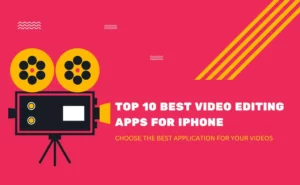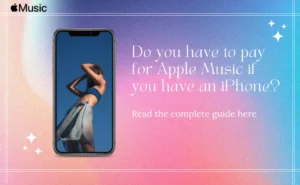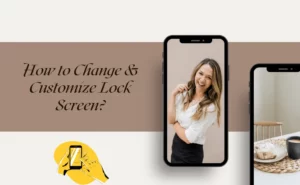Wondering, which Is The Best Aspect Ratio For Online Use?
Here Is The Answer
If you are an avid social media user, you already know the importance of an aspect ratio. It is the lifeline of good design, photography, and videography. You are sure to have used aspect ratios at least once in your lifetime, knowing or unknowingly.

The most basic description for aspect ratio is the relation between the height and the width of the frame. This detail is represented in the form of a proportion like W: H.
For example, if you have an image on the computer that is 1920px by 1080 px (Px=pixels). Then the ratio of this image will be 16:9.
Why Do We Need Aspect Ratio?
Once you understand what this value does, you might ask yourself, “why we need this value?”. If I could merely ask for a photo in 3-inches by 4-inches dimensions, why complicate things with a 3:4?
However, An aspect ratio is a helpful tool when you need to scale up or scale down. This helps to set a standard of measurement. This means the images or videos could be as big or small — provided the ratio is as per the requirements.
The need for it is more critical in the online medium. If you are to upload a photo, or a video online, you must abide by the pre-set aspect requirements of the platform.
For example, if you use the promo video maker online free version for youtube intros, you will understand that a YouTube video needs to be close to a 16:9 ratio to fit the screen size perfectly.
Sometimes the incorrect ratio also affects the final product. We would have noticed a lot of videos on the web, which are shot in landscape mode and have black borders on their sides to make them fit on the landscape format. This is a simple problem of incorrect aspect settings.
What Are The Commonly Used Aspect Ratios?
The cameras in the market today, both phone and digital, come with options to alter your default aspect ratio. Based on the end goal of the project, you can shoot your photos and video in the desired format.
In the case of designs and graphics, the creator will assign the size of the canvas based on the image specifications they need.
Here are some of the commonly used ratios:
4:3 ratio
A camera with a small sensor or the churched-down version of the portrait mode is the in 4:3 ratio. Here the width is four units, while the height is three units. This ratio in video format is also called an SD or standard definition video. This format is very commonly used in television broadcasting.
1:1 ratio
It is one of the most widely used image formats for social media. Both Instagram and Facebook consider 1:1 as the ideal specification for both images and video — for crop-free upload. The format is a perfect square and thus also referred to as the “square format”.
The popularity of the 1:1 aspect ratio in social media has made it a pre-set camera option on all iPhones. The 1:1 proportion is ideal for closeups and portraits.
16:9 ratio
Having a board width, this form is considered as the default aspect ratio for all wide-angle images and films. Most landscape and scenery photography is done in the 16:9 ratio. In the present age of digital media, this ratio has become the most extensively used in television and online content.
3:2 ratio
This ratio is utilized excessively in the print generation. The 3:2 format was commonly used for photo printing. The 6-inch by 4-inch images we placed into albums were in the 3:2 ratio.
Video Editing Apps
- Popular Video Sharing App
- Short Video App
Which Is The Best Aspect Ratio?
While this is an excellent question to address, it has no definite answer. The perfect choice for an aspect ratio is based on the camera you use, or the final platform of publishing. The utility of a ratio is mainly to master image composition.
Imagine composition is the term used to explain how the subject is framed within the photograph. If we consider any image, we can break it into grids. These virtual-grids are also found as a feature on your phone camera. It involves dividing your image into thirds — horizontally and vertically.
The absolute rule of composition is that the subject should be placed in the meeting point of the grid lines. Irrespective of it, the subject will be set based on the grid. This is what photographers call “The Rule of Thirds”.
The right aspect ratio, therefore, does not exist. The choice of the correct ratio is purely based on the end-point of this product. These images must be created to fit the guidelines of the platform.
Pro Tip:
If you shot your videos on the wrong ratio, now what? If you search online, “which is the best free video editor without watermark that can fix an aspect ratio?”, the answer is none of them. It cannot be changed without cropping a video/image. It must be set on the camera at the time of the shoot.
For example, if you were to shoot a video in the 16:9 format. If you cropped it to a 1:1 — you would lose the information along its width. In the same way, a 1:1 video cropped to 16:9 will lose some of its details along with its height.
In Conclusion,
The aspect ratio for each platform is mentioned at the time of the upload. While creating the content for online posting, keep an eye out for these formats. While all platforms will suggest a different ratio, keep your composition in a way that is conducive for cropping whenever needed.
As an exercise, open the camera setting on your phone and notice the various ratios listed. Set your camera to each of these ratios and click a photo with the same subject. (Example, a coffee-cup on the table).
Notice the difference in each of these images you clicked. You will realize how there is a different space around the subject in each photo. With this exercise, you will practically understand the nuances of aspect ratio.
Author Profile
-
Raj Singh is a highly experienced digital marketer, SEO consultant, and content writer with over 8 years of experience in the industry.
As a content writer, Raj has a talent for crafting engaging and informative content that resonates with audiences. He has a keen eye for detail and a deep understanding of SEO best practices.
Latest entries
 ApplicationFebruary 20, 2024Maha Food Hall Ticket 2024 Download Now- with Exam Dates
ApplicationFebruary 20, 2024Maha Food Hall Ticket 2024 Download Now- with Exam Dates ApplicationFebruary 18, 2024tsbie m services hall ticket download Inter 1st, 2nd year [2024]
ApplicationFebruary 18, 2024tsbie m services hall ticket download Inter 1st, 2nd year [2024] AppsFebruary 18, 2024Register on Nivesh Mitra App and Download Certificate/Noc
AppsFebruary 18, 2024Register on Nivesh Mitra App and Download Certificate/Noc AppsFebruary 17, 2024Cozovmoni App Download for Android (2024)-Cozovmoni.com
AppsFebruary 17, 2024Cozovmoni App Download for Android (2024)-Cozovmoni.com





